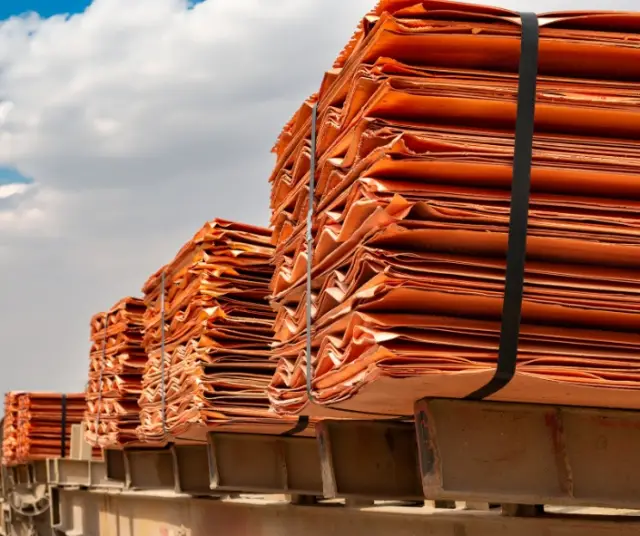Copper is one of the most important metals used in modern industry. Its versatility and unique properties make it an indispensable material for a wide range of applications, from construction to electronics. However, before copper can be used in final products, it must go through a complex extraction and refining process.
Copper Mining:
Copper mining constitutes the first fundamental step in the process of extracting this metal that is so essential in modern society. It is an activity that involves the location, extraction and processing of copper minerals present in the Earth's crust. This process takes place in different types of deposits, which can vary from large open pit deposits to narrower veins that require underground mining techniques.
Open pit mining involves the removal of the top layer of earth to access mineral deposits. This method is commonly used in shallow and large deposits, where it is more profitable and less risky from an operational point of view. On the other hand, underground mining is used in deeper deposits or where geological conditions make open pit extraction difficult. In this case, tunnels and galleries are excavated to reach the mineral veins, requiring specialized equipment and careful safety planning.
Once the copper ore has been accessed, it undergoes a series of processes for its extraction and preparation for the next stage. Crushing and grinding are key operations that reduce the size of the ore to facilitate handling and release the copper from the gangue. This step is essential to ensure efficient copper concentration in later stages.
Extraction Methods:
There are two main methods of extracting copper from ores: open pit mining and underground mining. In open pit mining, the surface layer of earth is removed to access the mineral deposits, while in underground mining, tunnels and galleries are excavated to reach the mineral veins.
Crushing and Grinding:
Once the copper ore has been extracted from the mine, it is transported to the surface and crushed into smaller particles using crushers and mills. This crushing and grinding process is crucial to free the copper from the gangue (unwanted material) and prepare it for the concentration stage.
Mineral Concentration:
After crushing and grinding, the copper ore undergoes a concentration process to increase its copper content and reduce the amount of gangue. The most commonly used method for copper concentration is foam flotation.
Foam Flotation:
In foam flotation, a series of chemical reagents, including collectors, foamers, and pH modifiers, are added to the crushed ore. These reagents cause copper particles to adhere to air bubbles, forming a foam that can be collected. Sandgrouse, on the other hand, remain in the water and are discarded as waste.
Copper concentrate:
The final product of the concentration stage is the copper concentrate, which contains a high proportion of copper and a lower amount of impurities. This concentrate is transported to smelters for further processing.
Concentrate Smelting:
Once the copper concentrate has been produced, it is sent to a smelter for further processing. In smelting, the concentrate is subjected to high temperatures in the presence of air and/or oxygen to eliminate impurities and obtain metallic copper.
Fusion :
The first step in the smelting process is the melting of the copper concentrate. It is fed into a high-temperature furnace or converter, where it is melted to form a liquid slag and molten metal. During this process, impurities are oxidized and separated from the molten metal.
Refinement:
Once smelted, the copper undergoes refining processes to remove remaining impurities and adjust its chemical composition to the required specifications. These processes may include electrolysis, fire refining, or electrowinning refining.
Final products:
Once the smelting and refining processes are completed, various copper products are obtained that can be used in a wide range of applications. These products include copper cathodes, ingots, wire rods and semi-finished products, which are sent to manufacturers for transformation into final products.
Environmental Impact and Sustainability:
While copper mining and processing are vital to modern industry, they can also have a significant impact on the environment if not managed properly. Mining and smelting can cause air, water and soil pollution, as well as generate solid waste and greenhouse gas emissions. It is crucial that mining companies adopt sustainable practices and clean technologies to minimize their environmental impact and promote corporate social responsibility.
The copper extraction process is a complex process that involves multiple stages, from mining the ore to smelting the concentrate. Throughout this process, a variety of techniques and technologies are used to ensure the efficiency and quality of the final product. However, it is also important to consider the environmental and social impact of these operations and work towards more sustainable and responsible practices. Copper will continue to play a crucial role in the global industry, and it is essential that its extraction and production is done responsibly and sustainably for future generations.
